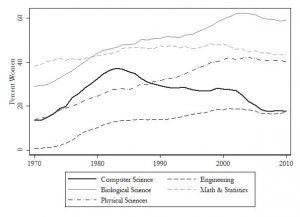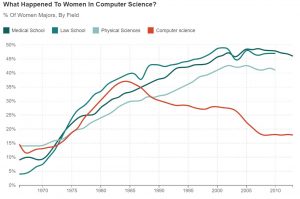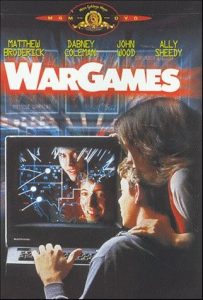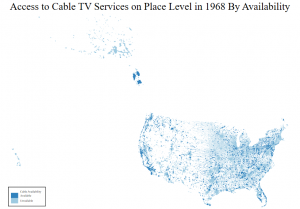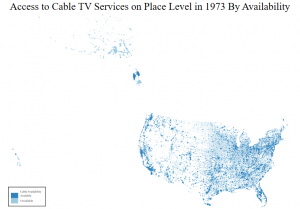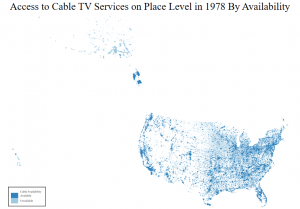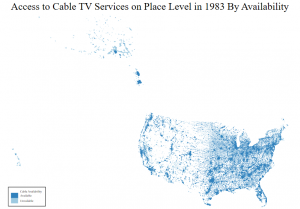Ha Bui, 2022, Professor Sarah Pearlman, Economics Department
This summer, under Professor Sarah Pearlman’s guidance, I had the opportunity to investigate the relationship between exposure to media content and women’s decision (not) to pursue Computer Science in higher education and a career in the U.S. Women in STEM is a topic that has intrigued numerous gender and labor economics projects. While the percentage of women entering stem fields such as bio, physics, and engineering has steadily risen since the 1980’s, women’s participation in Computer Science has been waning, wherein the percentage of women majoring in Computer Science has halved between 1983 and 2010.
Simultaneously, the second half of the 20th century also saw the expansion of cable networks in the U.S., offering households unprecedented access to affordable information and entertainment services. This socio-economic transition created a new cultural context that harbored the 80s college-and-job-market-entering generation of women and men.
Our project was inspired by an NPR article titled “When Women Stopped Coding” that highlighted gender dichotomies in pop-culture as a potential catalyst and was informed by previous studies of cable television’s impacts on women’s household autonomy and girls’ access to education. We examined the following questions:.
- Does access to cable television and the content in pop-culture on screened movies influence the declining women’s participation rate in Computer Science?
- If yes, how much, and what are the possible confounding factors?
In the first week, I conducted literature reviews to examine the following:
- The impacts of cable television access and media exposure on gender empowerment and decision making.
- The discrepancy in gender cultural representation.
- Possible determinants of the observed female’s diversion from Computer Science in the 80s.
Subsequently, I tracked the expansion of cable television in the U.S. through the years 1968, 1973, 1978, 1983, and 1988 using data previously acquired from the Television & Cable Factbook. To locate the arrival of cable services, I incorporated the cable television data with the Federal Information Processing Standards – a geographical code – listed in the Bureau Census data. Most of the data-cleaning tasks were conducted using reclink (a merging command that allowed for minor expression differences in string variables) in Stata. Specifically, we used the number of observations as the identifier and the names of states and localities as matching pillars. In the figures below, we can see the direction of cable network growth.
| Year | Total observations |
| 1968 | 3633 |
| 1973 | 6860 |
| 1978 | 11005 |
| 1983 | 18612 |
| 1988 | 39677 |
Because the data was collected using a programming language that we were not familiar with, I focused primarily on understanding the progression of cable access and checking for possible errors in the custom dataset, including typos in string variables like locality names and FIPS codes as well as duplications due to technical reasons. One particular issue I regularly encountered occurred when we tried to merge data using reclink: Stata would duplicate observations from either dataset to match with an observation from the other. This is because, in the original cable dataset, one locality could have numerous identifying FIPS codes, creating a long string variable. To work around this problem, we decided to horizontally separate the codes into several string variables. After that, we generated another binary variable to examine if the FIPS codes in the census file matched any of the FIPS codes listed in our custom cable file.
The process entailed constant trials and errors. Professor Pearlman was immensely patient and informative throughout our meetings. Although the project remains inchoate, the work thus far has provided a firm basis for continued research.

